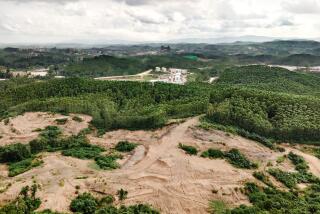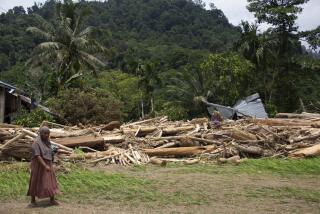Indonesia is building a new capital from scratch — no matter the environmental impact
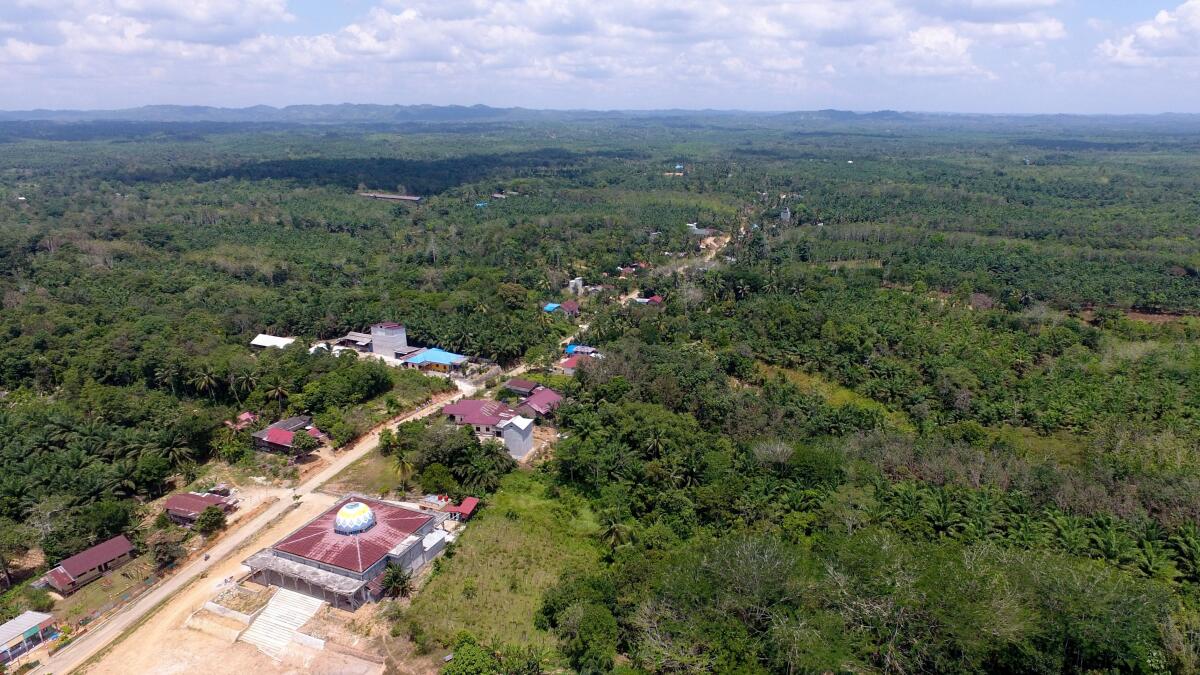
EAST KALIMANTAN, Indonesia — A tower inside the Samboja Lestari Orangutan Sanctuary offers a panorama of more than 4,000 acres of dense tropical forest packed with slender sengon trees that poke out of the jungle canopy over a smattering of sugar palm, bamboo and rambutan trees bursting with bright red fruit.
Rapid deforestation in this rugged corner of Borneo has diminished vistas such as these, shrinking habitats for wildlife including orangutans, Sumatran rhinos and proboscis monkeys — named for their pendulous noses — animals that can rarely be found elsewhere in the world.
The culprits behind the shrinking forests have long been the same: the coal, palm oil and timber industries, to name a few. But the region is now facing something entirely unexpected. Indonesia’s president has picked the remote province of East Kalimantan to build a new capital from scratch to replace Jakarta.
The proposal, so outlandish that few believed President Joko Widodo was serious when he first floated the idea four years ago, would be like relocating the White House, the Capitol building and hundreds of thousands of federal workers to an island backwater 800 miles away that, until this year, never had a major highway.
Jokowi, as the president is better known, said the move was necessary to unburden Jakarta, a sinking city of 10 million shrouded in smog and paralyzed by relentless congestion. Shifting the capital east, he said, would help even out Indonesia’s development, which is overwhelmingly concentrated on the island of Java, where Jakarta and its sprawling suburbs command the nation’s attention.
The plan, still greeted with widespread skepticism, embodies the infrastructure-heavy, nation-building aspirations of the Jokowi era in a country that perpetually underwhelms on the world stage despite its size and wealth of resources.
Fears now abound that the relocation of the nation’s capital will result in the trading of one environmental mess in Jakarta for another in Borneo.
The government has tried to placate concerns with such buzzwords as “green city,” “smart city” and “sustainable city” to describe the project — though detailed plans won’t emerge until next year.
Meanwhile, East Kalimantan’s governor, Isran Noor, said in a recent interview with The Times that the relocation plan would usher in a new age of economic activity in the province of 3.7 million.
“We will do more of everything,” he said. “Mining, gas, oil, coal, maybe forestry, plantations, fisheries and so on.”
The changes couldn’t come to a more storied region of Indonesia. East Kalimantan serves as a gateway to Borneo’s mythical jungles, the backdrop to Joseph Conrad novels and home to the native Dayak tribes once feared for headhunting.
Sitting north of the Pacific “Ring of Fire,” the province isn’t prone to the natural disasters such as volcanoes, earthquakes and tsunamis that afflict other parts of Indonesia. The same can’t be said for man-made disasters.
Stories abound of fatal falls and drownings in abandoned coal pits. Underground coal fires have been known to smolder for years. And slash-and-burn deforestation has fanned toxic air pollution that’s contributed to respiratory diseases and premature deaths.
In recent weeks, raging fires exacerbated by drought have rekindled memories of 2015, when haze from Borneo and Sumatra drifted beyond Indonesia to blanket parts of Singapore and Malaysia, which shares the northern third of Borneo with Indonesia and the tiny nation of Brunei.
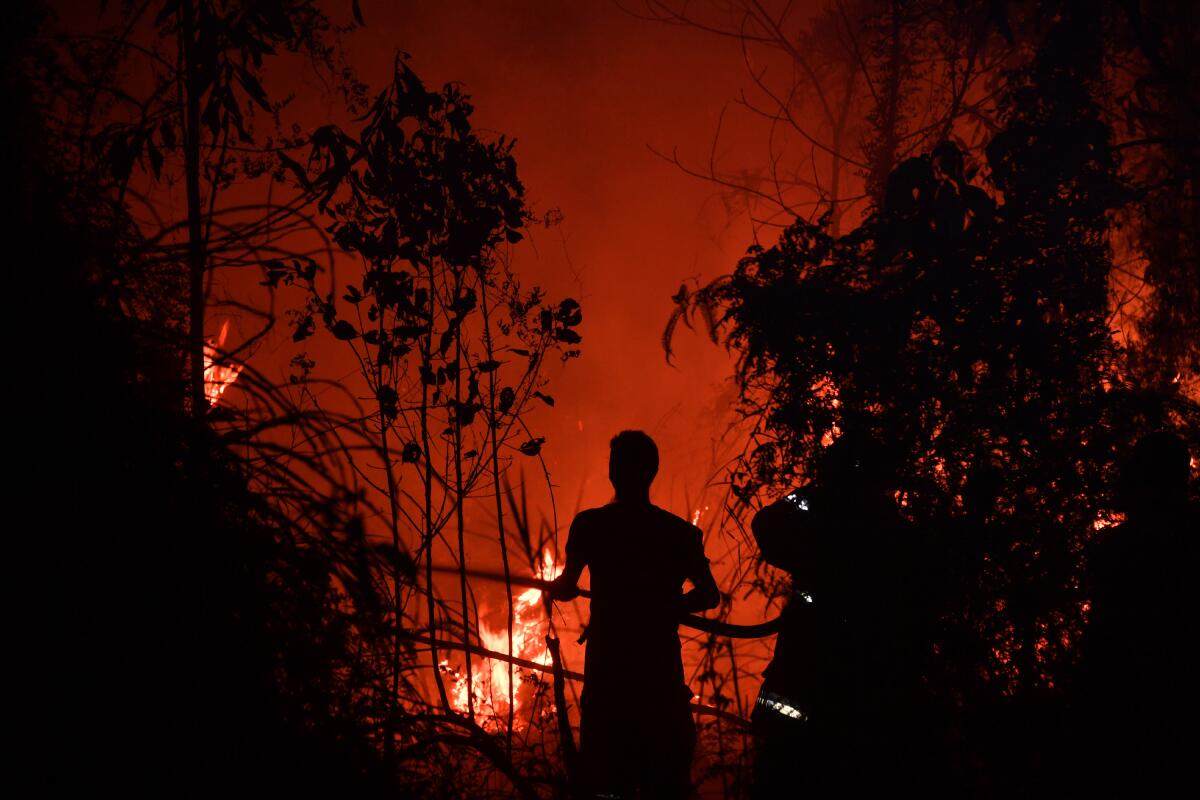
Environmental advocates say a new capital could invite excessive development, further straining a province that increased its rate of deforestation last year at a time when the national rate declined.
“I’m not worried about the capital,” said Jamartin Sihite, chief executive of the Borneo Orangutan Survival Foundation. “I’m worried about everything they’re going to build around the capital.”
Sihite’s organization operates the Samboja Lestari sanctuary, home to orangutans and sun bears, the world’s smallest species of bears.
The endangered orangutans, many of which are rescued after losing their habitats or being abandoned after being kept as pets, are taught how to forage for food, traverse jungle treetops and identify threats including poisonous snakes, so they can be reintroduced into the wild. Suitable land for their return is getting harder to find. The sanctuary itself comprises replanted trees, not primary forest.
In the last 50 years, Indonesia has lost 285,700 square miles of rainforest, according to Greenpeace, an area larger than Texas. Like the Amazon, its shrinking mass has consequences for global CO2 levels.
A moratorium on clearing primary forest and carbon-rich peatlands for activities such as palm oil planting and logging has proved ineffective because of lax enforcement. Additionally, millions of acres aren’t beholden to the rule because permits to clear the land were granted before the first moratorium was declared in 2011.
“The focus of the current administration is economic development,” said Arief Wijaya, senior manager for climate and forests at the World Resources Institute Indonesia. “The environment is a much lower priority.”
Land speculators are betting the new capital, which will cost at least $33 billion to build and won’t welcome relocated workers until 2024 at the earliest, will spur a boom in the surrounding area.
Residents say buyers have been pouring into Balikpapan, the largest city near the proposed capital site, and negotiating purchases with anyone who will listen. Land in some areas has soared in value to $20,000 an acre from $1,800.
“Soon, there will just be speculators here,” said Basri, a 37-year-old schoolteacher, who, like many Indonesians, uses only one name. “The land value keeps going up.”
Basri said he and his neighbors expect to be relocated to make way for the capital since they live in one of the two districts — known in Indonesia as regencies — where core government buildings such as the presidential palace, parliament and Ministry of Defense will be located.
Before any of that happens, though, furious political horse trading will take place in Jakarta as Jokowi embarks on his second and final five-year term. A project this size will require him to offer concessions, often under the table, to members of parliament holding key committee positions. Conservation is not expected to play a major factor.
“The way to get things approved by legislators, especially big infrastructure projects, is to spread the patronage around,” said Aaron Connelly, an expert on Indonesian politics at the International Institute for Strategic Studies in Singapore.
At least one of Jokowi’s major rivals appears to be on board with the plan.
Prabowo Subianto, the former general who lost the last two presidential elections, is drawing closer to Jokowi’s coalition. Prabowo also has family links to landholdings in East Kalimantan that will be developed, said Isran, the governor.
“I have communicated with Prabowo,” said Isran, adding that his support of the capital relocation is “not a problem.”
Still, experts say any relocation could take decades to complete, particularly if Indonesia has to rely on state-owned companies saddled with debt to execute the plan. Australia was still moving government departments out of Melbourne into Canberra in the 1970s — more than six decades after it was named the new capital.
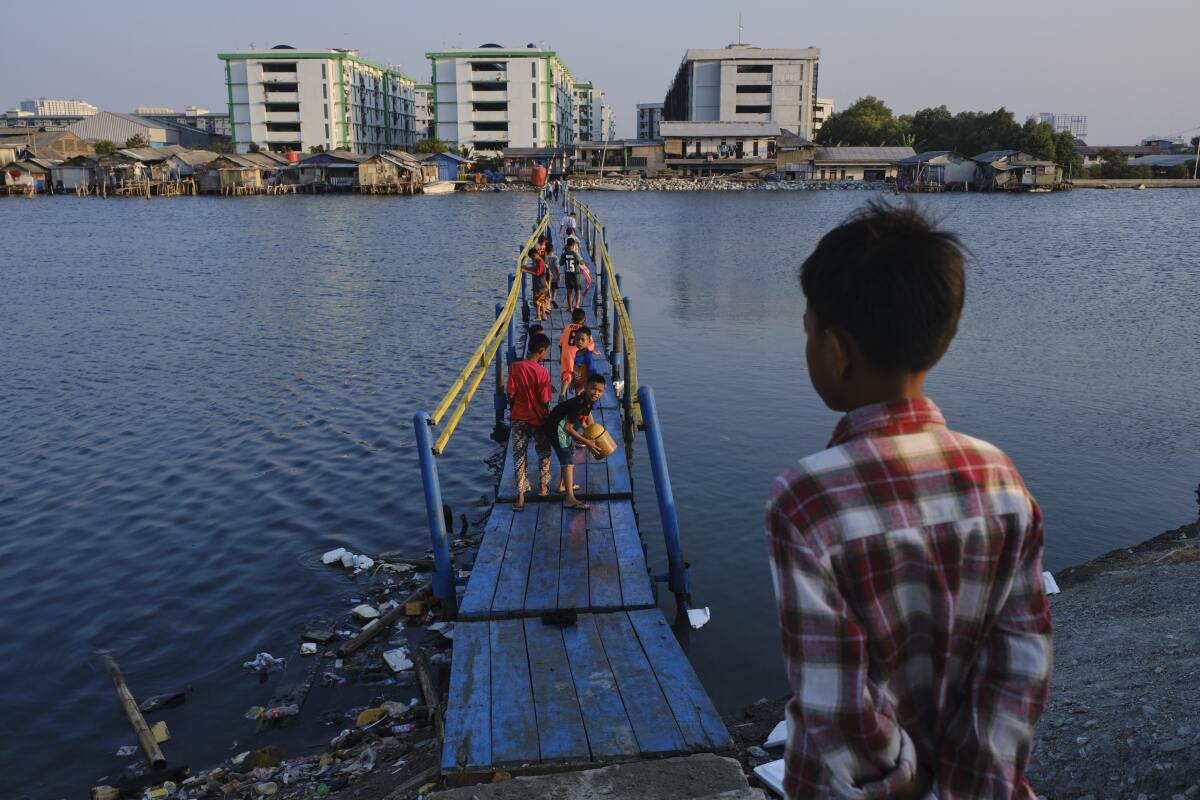
In Jakarta, residents are scratching their heads about the project. A recent survey by Kedai Kopi, a public opinion research firm, showed that 95.7% of the city’s inhabitants opposed the move.
“It’s nonsense,” said Pety, a 61-year-old cake business owner and Jakarta native. “Jakarta is not a good place to live anymore. The government should focus on improving the situation here.”
Officials have been trying.
This year, Indonesia said it would spend $40 billion to improve infrastructure and transportation in Jakarta, ranked by at least one index as having the seventh-worst traffic in the world. The city unveiled its first subway line in March.
Depletion of groundwater has led to massive subsidence. About 40% of the city of 10 million now lies under sea level, with some neighborhoods sinking 7 inches a year. The government is now building a giant sea wall in Jakarta Bay, which has been criticized for ignoring coastal erosion and blocking access to the sea for fishermen. Environmental experts say the only genuine solution would be to replenish groundwater with a newly built reservoir.
In a coastal neighborhood in the city, a graffitied concrete wall less than a foot thick holds back the murky bay. On the other side, water splashes against a now submerged mosque that used to fill with workers from the surrounding seafood packing businesses. Water seeps through a small crack in the base of the wall like a forgotten faucet left on.
“I don’t know how long it’s going to hold,” said Ani, 63, a mother of two who runs a nearby snack stall balanced on stilts over a ditch filled with fetid green water. “Hopefully, a long time.”
More to Read
Sign up for Essential California
The most important California stories and recommendations in your inbox every morning.
You may occasionally receive promotional content from the Los Angeles Times.
